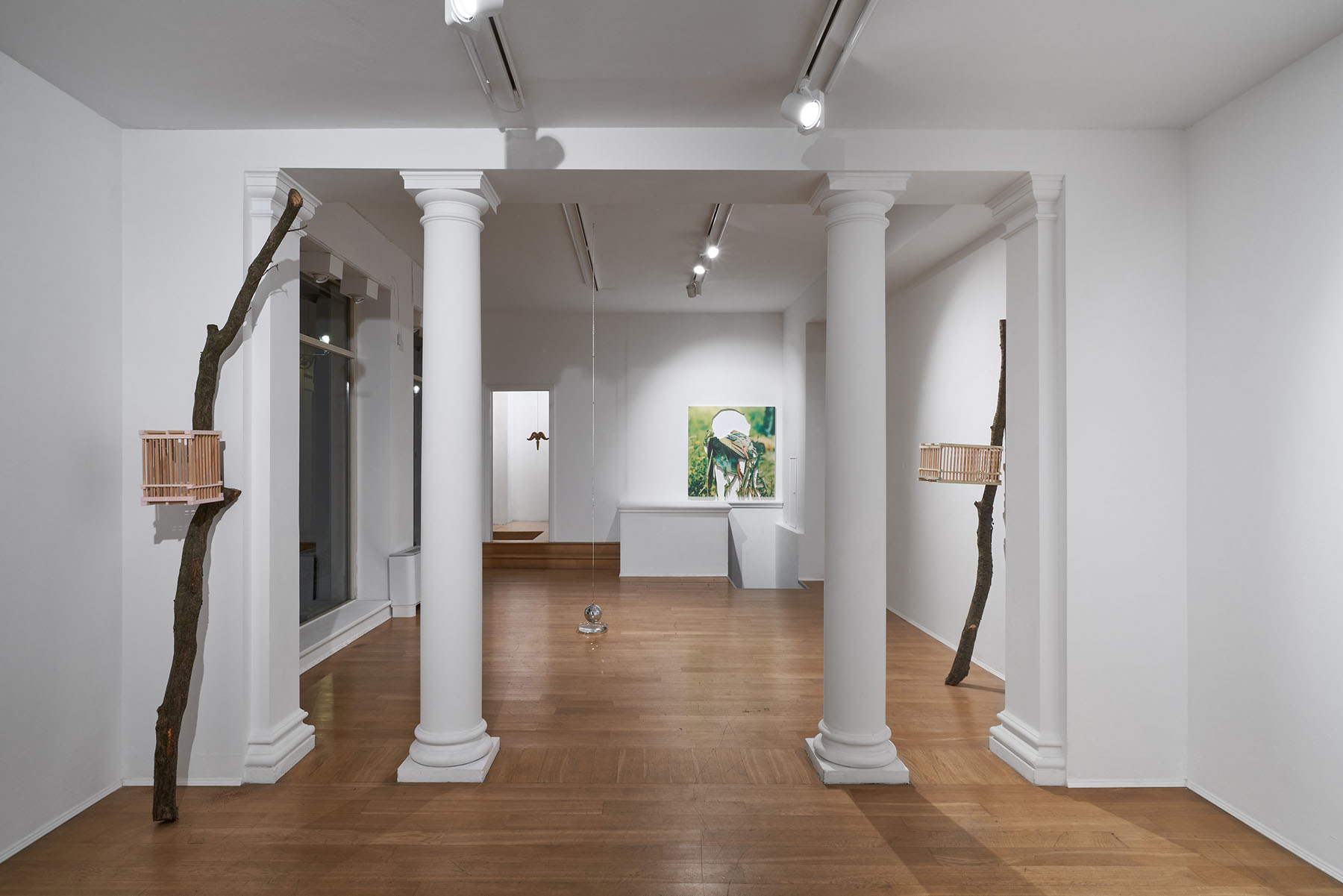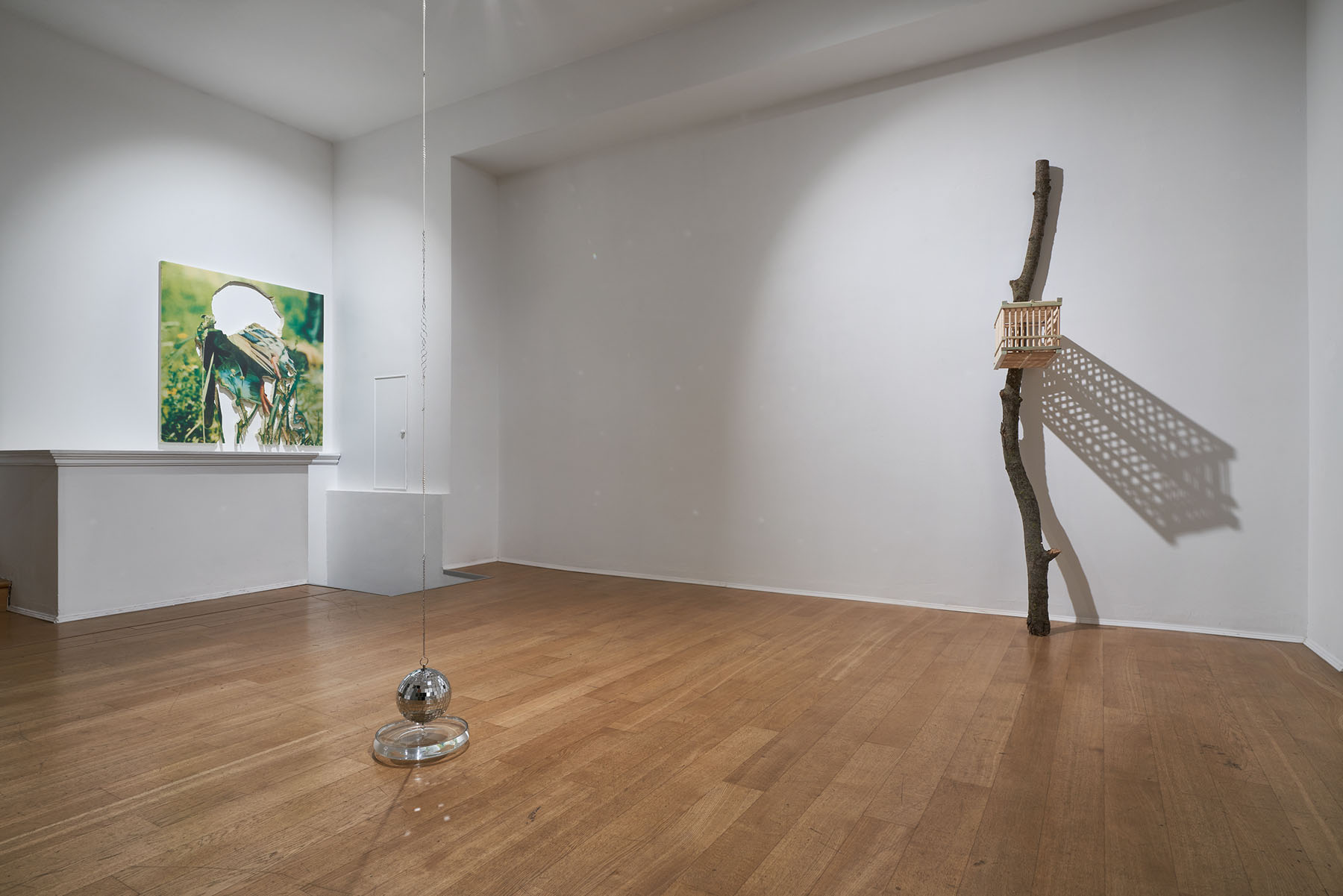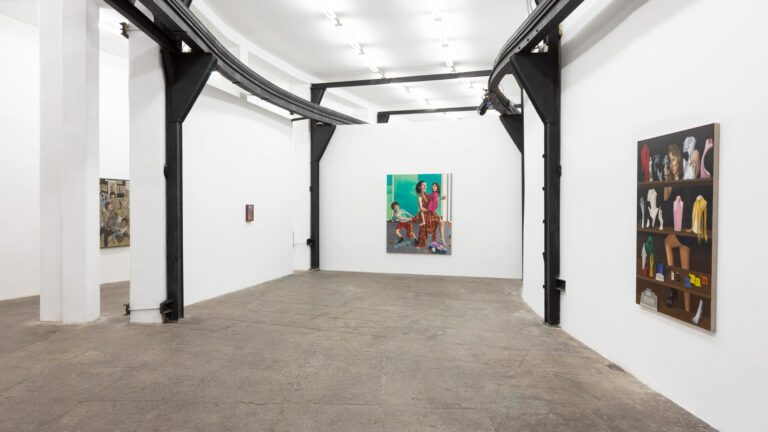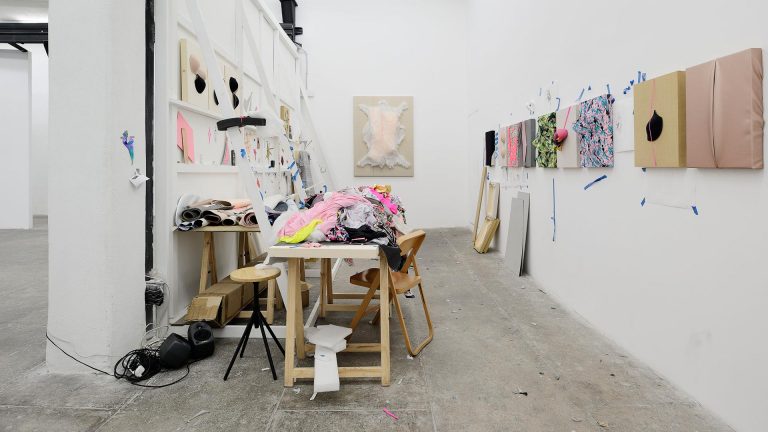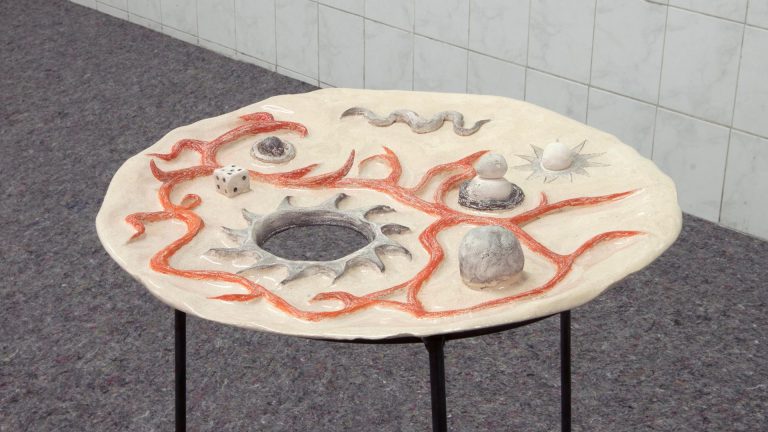Artist: Edoardo Manzoni
Exhibition title: Il Primo Canto
Venue: The Address, Brescia, Italy
Date: September 24 – November 8, 2020
Photography: all images copyright and courtesy of the artist and The Address, Brescia
It is hard to understand today that it is to the animal that we owe our human being. To animals called pets, to those called wild animals, history has progressively removed shreds, subordinating their qualities and transferring them to more manageable objects, to mirrors in which it is easier, as things have turned out, to find oneself. It has been said that they are beings without a world, lacking in technique, but the truth is that our thought of technicity as much as our relations with space and cognition, everything, after all, is indebted and has something to do with an idea of animality that accompanies the human being. Hidden behind an instrumental image, behind domestication and exoticism, the animal is one of the great latencies of history.
This is how Edoardo Manzoni thinks of the animal in his artistic practice, through that relationship that has always existed between the human being and his mirror: hunting. But make no mistake. Here hunting is not that playful activity that makes death a hobby, a divertissement, but rather the entanglement of relationships that took place in the macabre dance between prey and predator. These are the first steps that have led humans to try to understand the animal and consequentially to understand themselves through it in imitations, in the mapping of territories, in the design of instruments, moved by hunger, by the research of familiarity in the approach.
Concealment, expectation and unveiling are the assumptions of the hunt, and these are the characters of the scene of the exhibition Il Primo Canto by Edoardo Manzoni. But the spectator will not meet the animal; rather, he will see the empty cages, per-haps sense the traps set, knowing that the animal will persist in crouching in silence. Prey and predator disappear to encourage listening, detail, attention to movement. One wants to give mass to the invisible, to make a concrete image. And sight is not enough. It is necessary to bring the whole body complexity into play, to make it work with an imagination that com-bines the eye to the nose, the hand, the foot. Il Primo Canto is the listening of an audience that recognizes a language and ends up imitating it, discovering it in its calls, that thinks a parlance in terms of seduction and deception and learns it, internalizes it to such an extent that that the first song sounds like a first cry.
In this way hunting, as a relationship between preys, has a ritual and evolutionary value. It is the “sacred game” of eating and being eaten, which involves death through the practices of allurement, cheat and concealment,[1] and which has forged our past. In this sense it is possible to understand the effort required in front of Edoardo’s works, which is to take us back to the latent past that combines the thousands to the millions of years, which thinks the instinct that precedes the institution. Because hunting has given rise to a knowledge that has been able to define space, to mark time, to set limits and to decline paths, impressing itself to the bottom of our marrow. The prey was perhaps one of the bases on which the relational and cognitive structures were built, on which the relationship was stipulated between the human and his other, the animal. Think of the bison in the Altamira caves, the design that evokes the animal and the meticulous anatomy, the cuts and movements. Think of the relationship that the prey, its dimensions, its herd, has entertained with social organisation. It is through the animal as prey and apparition that we have made ourselves “pack”, imitating and modelling them, to the point that instincts have been mediated, redefined and established as instruments.
We could say that it is in this key that the animal is removed from Edoardo’s work, as a great “latency” or “concealment”. Because as much the hunt as the language and the organization that precedes it have forgotten and denied the relationship through which we imagined and seduced something non-human for the first time. Thus, the removal of the hound makes one think of the moment when the dog’s instinct has been culturally shaped and reduced to that of a predator: a hunting dog is for hunting. It is an instrument, a canine machine composed of smell, speed and ferocity, so that a hound is nothing more than a nose, paws and fangs. It remains the prey, which is both the end of the hunt, a partial object to which an instinct is dedicated and exploited, and an object of knowledge. No different from the figure of the hound is the logic of the birdcall, which, starting from the song, from the refrain, subordinates the chirping to seduction and deception, and instrumentalises the animal and its space. So that the territory, made of branches, weeds, niches, steeps and plains, is reformulated for these drifts, and becomes territory of and for hunting, but only after learning to sing, to speak.
Edoardo’s work is played out in these clusters. On the one hand, the relationship, in some ways constituent, that the human and the animal have engaged in through the practice of hunting; on the other, the processes of seduction, deception and concealment that this presupposes, and which are highlighted in the works on display. To the dog, which masks the violence of hunting with the implicit praise of posture and the familiarity of domestication – the dog all nose, paws and fangs – the bloody aspect of hunting is returned. To the song, the call, instead, the centrality of silence and crouching is brought back to the centre of the hunt, returning, once again, the violence of the seduction mediated by deception in an “out of scale” that first of all exposes the spatial logic of hunting. And here the ambiguity that accompanies Manzoni in his production is played out: the conviction that the artist does not act differently from a hunter, that he therefore aligns himself with the aspects that some call “magic”, with those pictorial rituals and technical movements that the hunt, and that “spinal” cognitive basin that we have been carrying with us for millennia, has thought in terms of representation, anticipation and evocation. On the other hand, it is the practice of making visible which hunting has taught, impressed, and which is revealed in ambiguities. Learn from the enormous whistles, from the silence of the monument: the language starts from the forest, but it is not forest, at least not anymore; it strives, instead, to create a desert.
Edoardo Manzoni (b.1993, Crema) lives and works in Milan. His research develops from the rural context in which he grew up and which has always influen-ced his work. The rural world and the imaginary linked to it have stimulated interest in the relation-ship between the natural and the artificial, the hu-man and the animal. His artistic practice, based on a process of continuous recovery and re-elaboration of objects and materials, crosses different modes of expression such as sculpture, painting and installation, often seeking a dialogue with the world of craftsmen.
His works have been exhibited in different places including: StateOf, Milano; Fondazione Antonio Ratti, Como; La Triennale, Milano; Sonnenstube, Lugano; Fondazione Pini, Milano; PAV, Torino; Careof, Milano; Luogo_e, Bergamo; Spazio Menouno, Treviglio. In 2016 Manzoni creates the artist group DITTO, with which he exhibits in: Macao, Milano; Villa Farinacci, Roma; Current, Milano; Museo Archeolgico Paolo Giovio, Como. Since 2017 takes part in Altalena, an indipendent curatorial project. In 2018 Edoardo founded Residenza La Fornace, inviting many artists in his own family farm.
-Text by Piergiorgio Caserini
[1] A note for the interested reader, to whom we recom-mend reading Paul Shepard: The tender carnivore and the sacred game.


